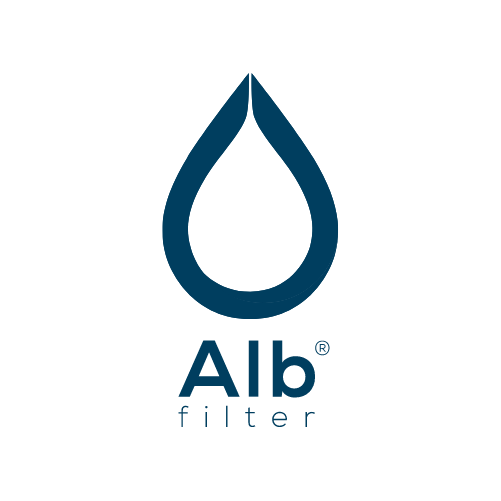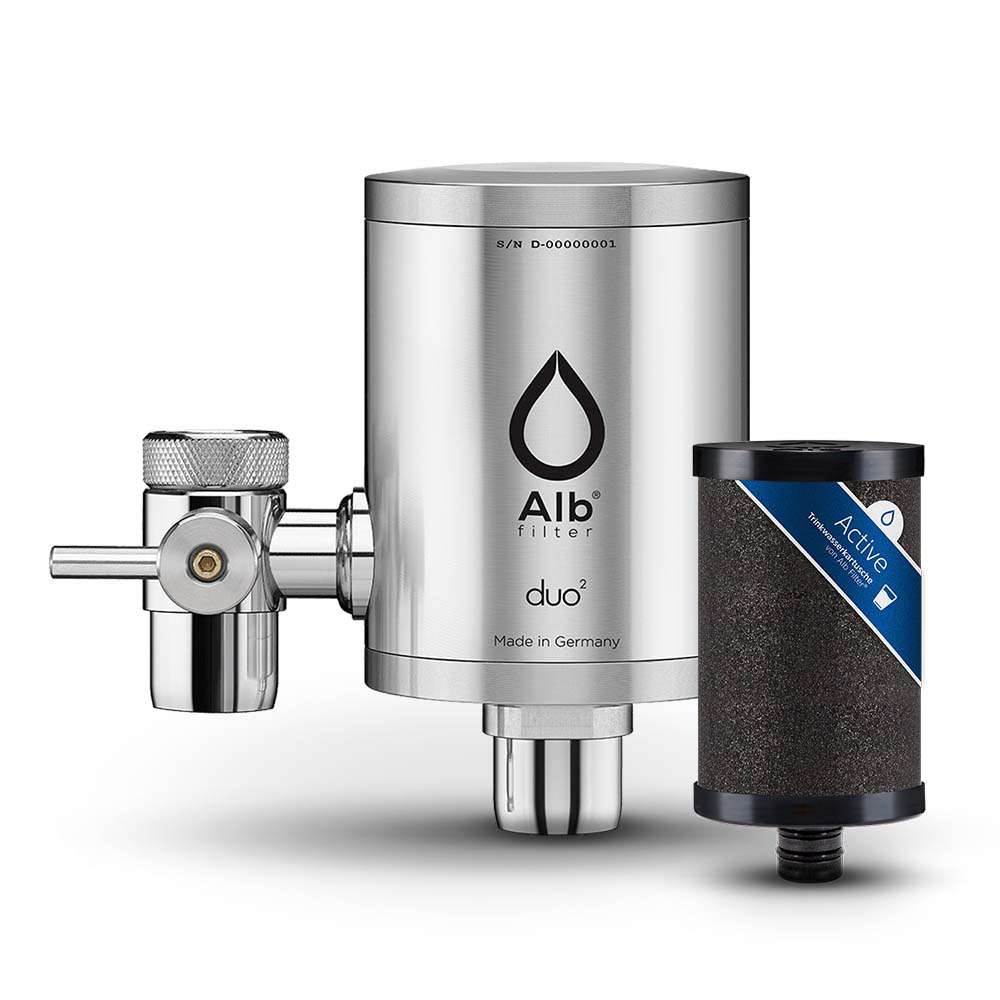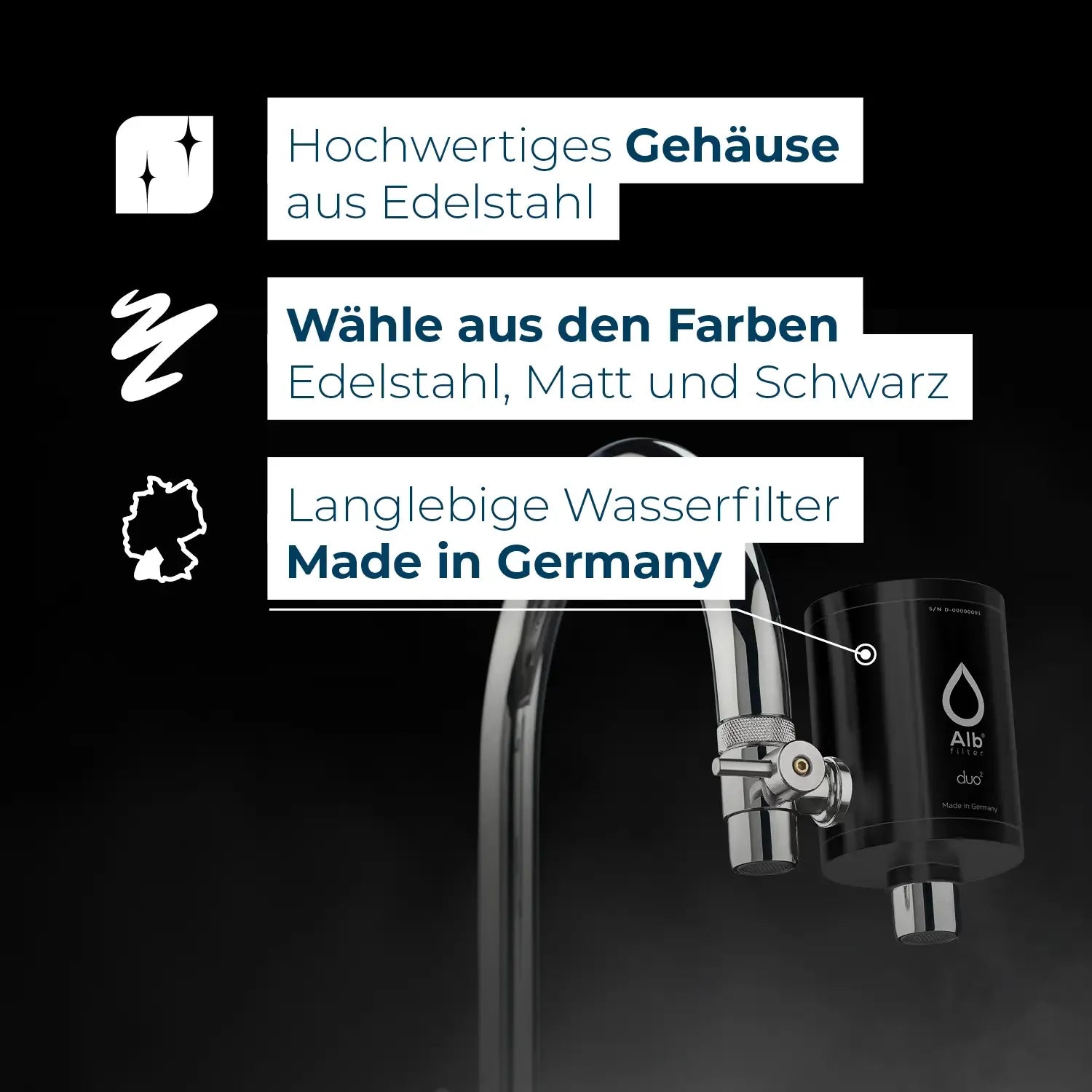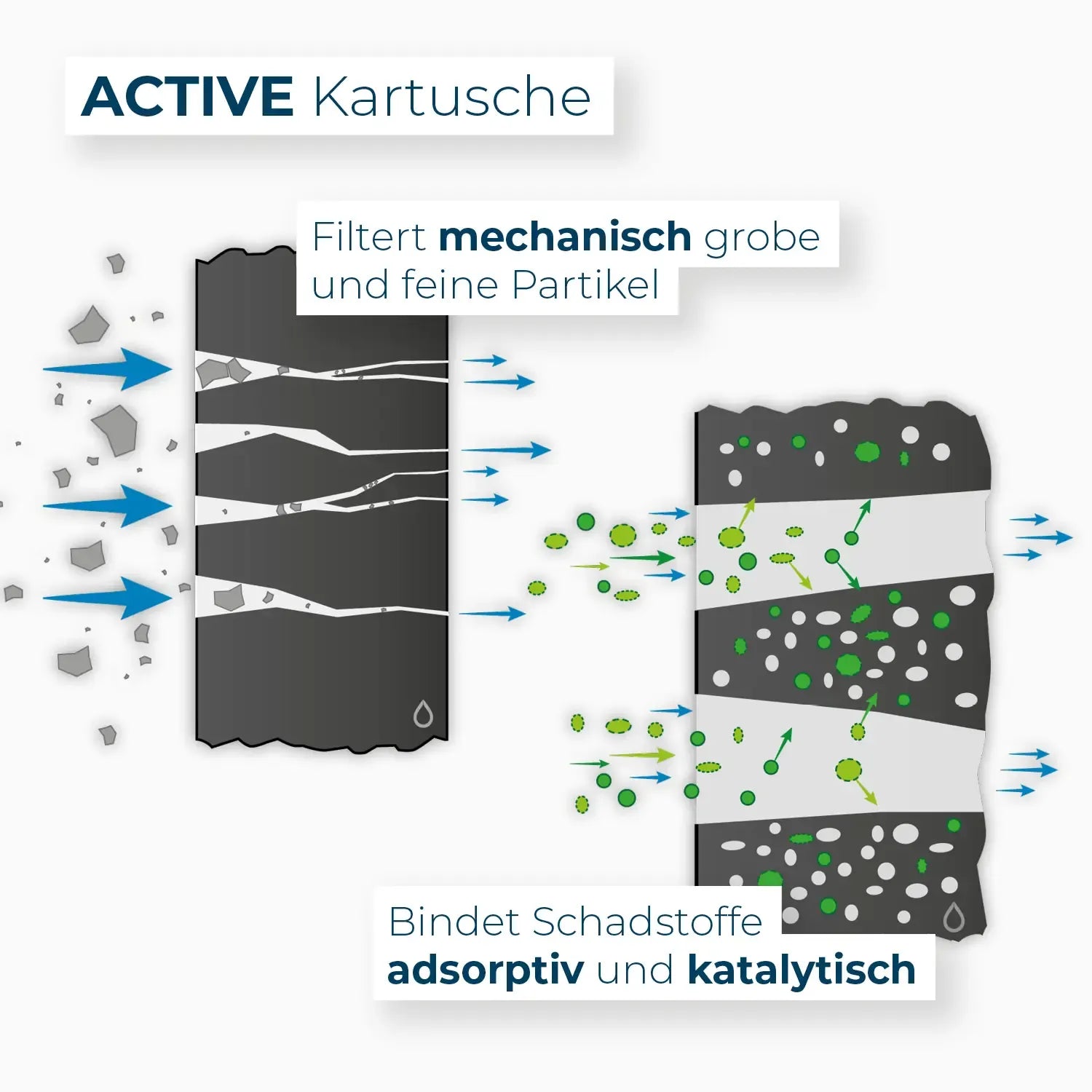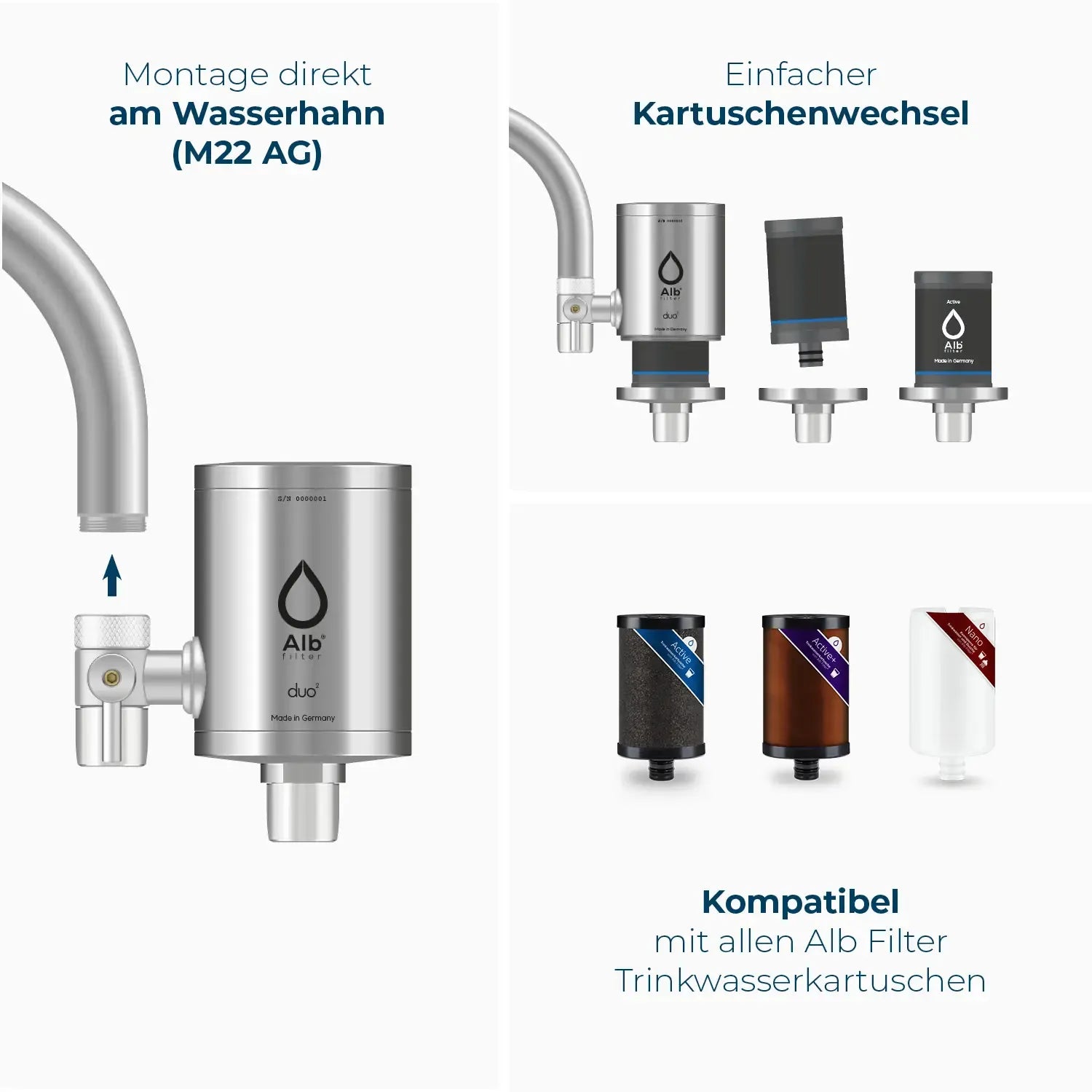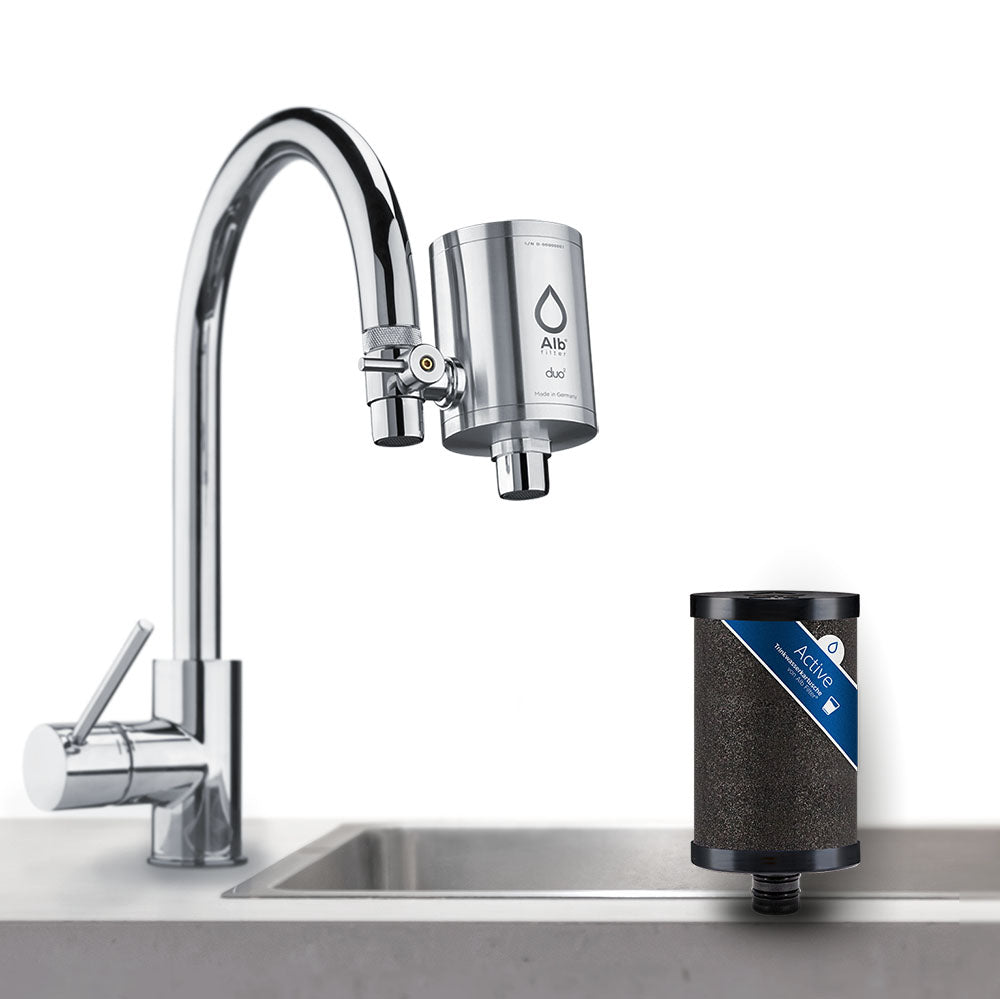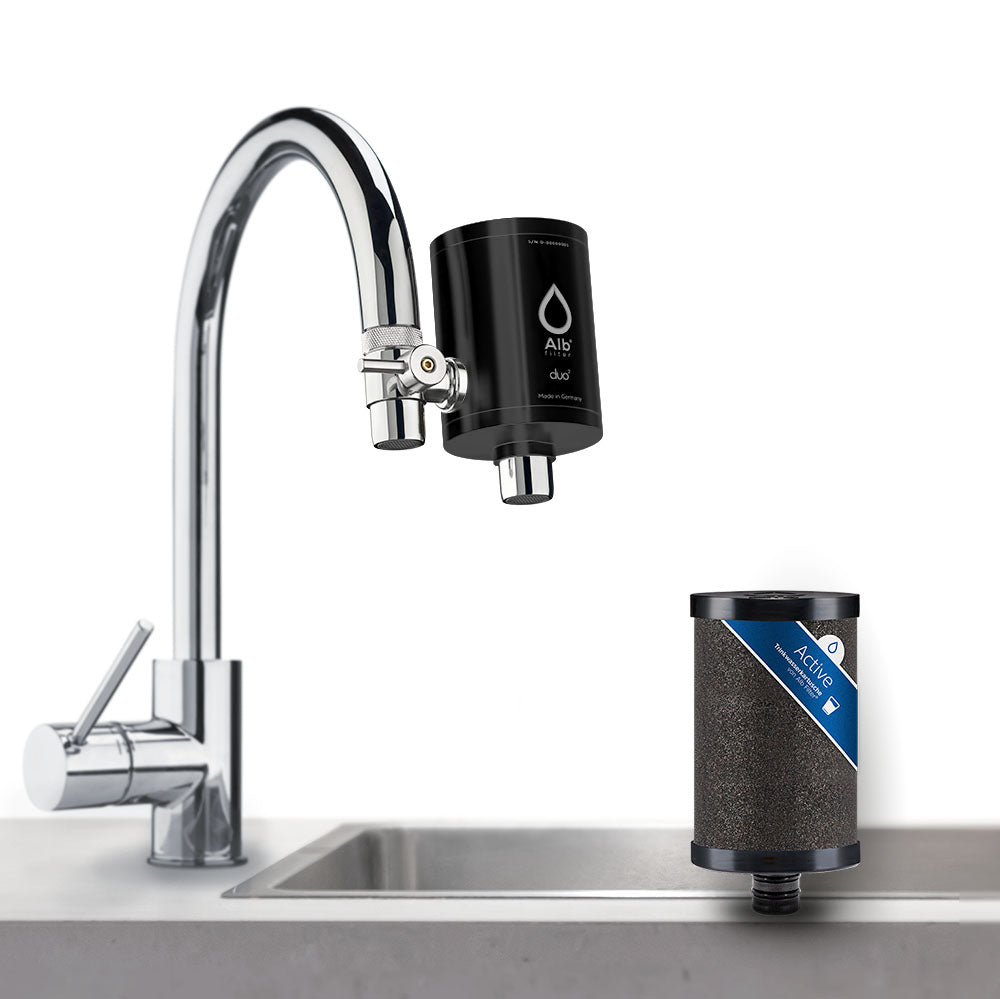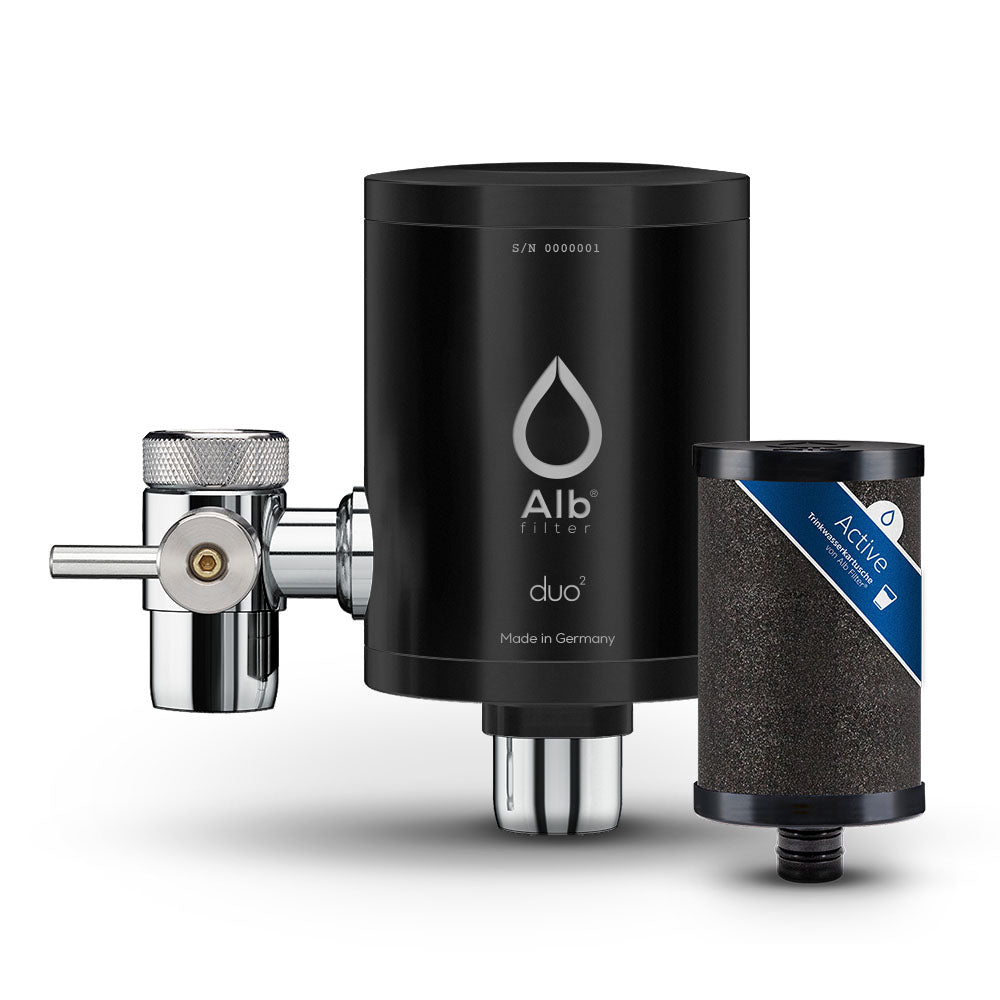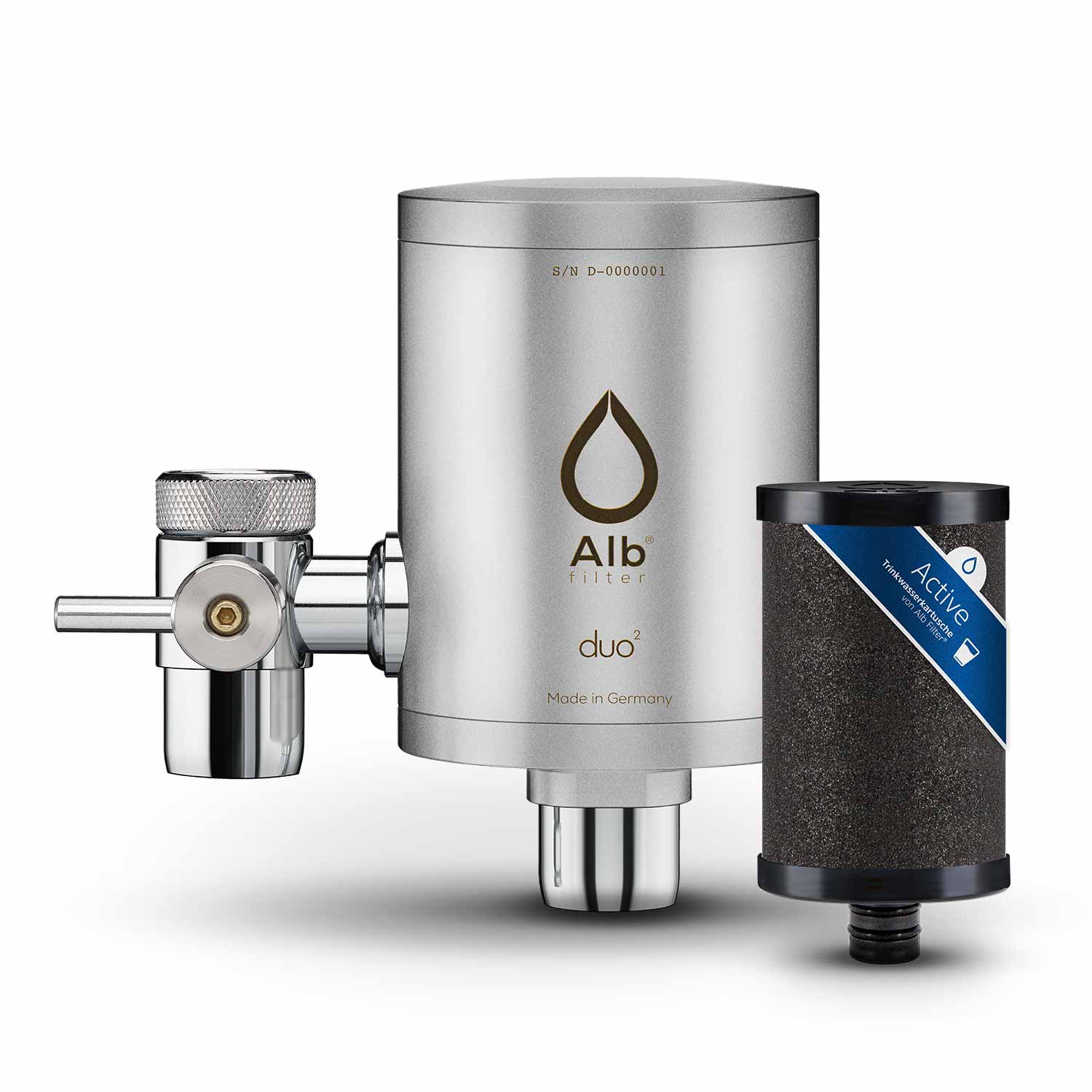Water filter for hormones
Water filters for hormones are a sensible investment in your own health for two reasons:
- The German Drinking Water Ordinance does not set any limits for hormonal residues.
- Does the improper disposal of medication - e.g. via the toilet or sink - lead to hormone residues entering the water cycle?1
Particularly in surface waters such as rivers or lakes near sewage treatment plants, worrying concentrations of endocrine disruptors or hormones can be found. Current research findings show that drug residues and hormones that are difficult to break down not only damage the environment, but also enter households via drinking water.2
That is why you will learn in this Guidebook more about it, …
- how hormones enter drinking water via the water cycle,
- what effects this can have on animals and humans
- and what options are available for filtering hormones out of the water.
Why filter hormones out of the water?
From a medical point of view, it is not harmless if endocrine disruptors or hormones get into the water. The residues often find their way into the water cycle and ultimately into the tap via the following (detour) routes:
- Incorrectly disposed of medication (e.g. via toilet or sink)
- Industrial waste (chemical industry)
- Female urine (birth control pill)
The main sources of hormones in drinking water are therefore not, as one might think, doctors' surgeries or hospitals, but private households!
Good to know
Around 30,000 tons of pharmaceuticals are consumed in Germany every year. Around 95% of drug residues and their degradation products are excreted via the toilet. In addition, up to a third of medicines in German households are disposed of improperly. To date, sewage treatment plants have hardly filtered out these residues.
Effects on animals and the environment?
Many of these residues are not filtered by sewage treatment plants and then affect adjacent bodies of water such as rivers or lakes. German anglers know, for example, that entire fish stocks are feminized in the vicinity of sewage treatment plants due to the high hormonal load of oestrogen.3
Good to know
Zoologists from Tyrol and Spain have even demonstrated this effect in high mountain lakes. In addition, the Bund Naturschutz (BUND) has been working intensively on hormonal pollution in surface waters for years.4 5
Health risks for humans?
Endocrinological societies that research the effects of hormones on humans and the WHO consider it proven that endocrine disruptors pose a health risk to humans and can contribute to the development of various diseases - such as endocrine disruptors, which can cause ...
- hormone-sensitive cancers,
- metabolic diseases such as diabetes mellitus,
- Infertility
- and neuronal developmental disorders.
- In another Guidebook you will receive further information about what hormones can do in drinking water , how they get there and how hormones differ from hormone-active substances.
When does it make sense to use a water filter for hormones?
Unfortunately, there is no way for private households to detect hormones in drinking water. At least not without a laboratory test or special scientific measuring devices, so-called LC-MS detectors.6
Good to know
Why don't sewage treatment plants filter out hormones? The reason is simple. Many wastewater treatment plants were built at a time when people were not even aware of the problem of hormones and in particular oestrogen in the water cycle.
Even though the exact effect of hormones and endocrine disruptors on humans is still being researched, according to respected organizations such as the WHO and UNEP - the United Nations Environment Programme - there is at least the suspicion that endocrine disruptors may be linked to various diseases - from fertility disorders to behavioral changes and suspected cancer-causing effects.7
Water filter for hormones: these options are available
There are therefore good reasons to take protective measures against contamination with hormone-like substances. If you want to be on the safe side, you can filter your drinking water. In summary, there are the following options: Hormones can be filtered out by....
- Activated carbon filter,
- Reverse osmosis,
- Distillation
Although reverse osmosis and distillation are highly efficient, they are cost-intensive. In the case of distillation, the container used must be thoroughly cleaned. We will go into the individual filter types and their special features in more detail below.
Distillation
Theoretically, hormones can be removed from water by steam distillation. The procedure is as follows:
- The drinking water is boiled.
- The water evaporates and rises to the top.
- The pollutants stick to the ground.
- Once at the top, the steam condenses and cools down again.
- The condensed water can drip off in an external container.
Disadvantage of distillation? The process of evaporation also filters valuable minerals out of the water. As a result, healthy substances are lost and the water may taste less good. In addition, boiling water regularly consumes a lot of electricity.

Reverse osmosis
Reverse osmosis is a physical process for water treatment that was originally developed for the military and aerospace industry. Reverse osmosis can even be used to make waste water drinkable again.
In simple terms, the procedure works something like this:
- The water is pressed through a kind of "sieve".
- The sieve has such small pores that only water molecules can pass through.
- This is ensured by a semi-permeable osmosis membrane.
- This means that the purified water cannot be returned.
- In this way, clean water is obtained from contaminated water.
Disadvantage of reverse osmosis? Although reverse osmosis can safely remove drug residues such as hormones, as only the water molecules can penetrate the membrane, the water consumption is comparatively high and valuable minerals are also lost with this method.

Activated carbon block filter
High-quality activated carbon block filters offer effective protection against endocrine disruptors in Tapwater. In addition, they can reliably filter microplastics, bacteria, germs and heavy metals and also remove unpleasant odors and unpleasant tastes from the water.
Strictly speaking, an activated carbon block filter works in three different ways, using three different mechanisms to remove pollutants from the water.
1. mechanical effect
Mechanical filtration is made possible by the many filigree channels in the activated carbon block, which prevent excessively large particles from passing through the activated carbon filter - e.g:
- Sand and rust
- Asbestos fibers
- Suspended particles
- Bacteria

2. catalytic effect
Unlike mechanical filtration, the catalytic principle is at work here, whereby small particles are converted by the finely arranged pores. In this way, the activated carbon block contributes, for example, to ...
- Elimination of chlorine
- and the conversion of lime.

3. adsorptive effect
The adsorptive effect of activated carbon block filters is particularly effective: substances that are smaller than the pores inside are firmly bound by the carbon. The adsorptive effect of activated carbon filters is very effective and is similar to that of a strong magnet. Substances that are adsorbed include
- Odor- and taste-disturbing substances
- Heavy metals (e.g. lead, copper)
- Hormone residues
- Drug residues
- and much more.

- Disadvantage of activated carbon filters? Although the adsorptive effect of the activated carbon block filter removes all residues of medicines and hormones from the water, the filter cartridge needs to be replaced every four months.
Water filters for hormones & current research
Water contaminated with hormones or endocrine disruptors is potentially harmful to human health. The contamination of water by hormonal micropollutants from medicines and contraceptives is known worldwide. And as conventional wastewater treatment plants are unable to remove these contaminants, there is a great deal of current research into the problem - some of which is also being carried out by the government.8
It was not until 2020 that a team of researchers at the Karlsruhe Institute of Technology developed an innovative filter system that can remove the highly effective oestradiol, a hormone from the oestrogen group, from water.9
Until such technologies catch on and are widely used in sewage treatment plants, consumers can use water filters for hormones. This way, they can be sure that neither oestrogens nor endocrine disruptors get into their drinking water.
FAQs
What water filters are available for hormones?
Hormones can be removed from Tapwater using activated carbon filters, reverse osmosis or distillation. Although reverse osmosis and distillation are effective, they consume a lot of energy and also filter valuable minerals out of the water.
Why filter hormones out of the water with activated charcoal?
High-quality activated carbon block filters offer effective protection against hormones and endocrine disruptors in Tapwater. Activated carbon filters are comparatively inexpensive to buy and easy to use - e.g. directly at the tap.
Why are there hormones in Tapwater ?
The main cause of hormones in drinking water is the incorrect disposal of medicines in the toilet or sink. Other sources include industrial waste (chemical industry) and female urine (contraceptive pill).
How many hormones are in drinking water?
There is no general answer to this question: it depends on how many hormones or endocrine disruptors, e.g. from the chemical industry or drug residues, enter the water cycle and thus the drinking water.
Related articles and products
References
- German Drinking Water Ordinance
https://www.gesetze-im-internet.de/trinkwv_2023/TrinkwV.pdf - Umweltbundesamt: Options for action to reduce the entry of human pharmaceuticals and their residues into raw and drinking water.
https://www.gesundheitsinformation.de/welche-aufgaben-haben-die-hormone.html - Estrogen exposure in mineral water:
https://www.ernaehrungs-umschau.de/fileadmin/Ernaehrungs-Umschau/pdfs/pdf_2011/02_11/EU02_2011_083_085.qxd.pdf - Fish in high mountain lakes feminize:
https://www.uibk.ac.at/ipoint/news/2015/fische-in-hochgebirgsseen-verweiblichen.html.de - Endocrine disruptors in water:
https://www.bund.net/fileadmin/user_upload_bund/publikationen/fluesse/fluesse_hormonaktive_substanzen_hintergrund.pdf - Liquid chromatography with mass spectrometry coupling:
https://de.wikipedia.org/wiki/Fl%C3%BCssigchromatographie_mit_Massenspektrometrie-Kopplung - WHO & UNEP:
State-of-the-science_of_endocrine_disrupting_chemicals_2012 - Federal Institute for Drugs and Medical Devices: Examination of options for action to minimize the entry of medicinal products for human use
https://www.umweltbundesamt.de/sites/default/files/medien/374/dokumente/bericht_minimehr_17-03-10_final-korrigiert-logos.pdf - New filter system removes hormones from water:
https://www.europeanscientist.com/de/von-der-redaktion-ausgewahlt/neues-filtersystem-entfernt-hormone-aus-wasser/

